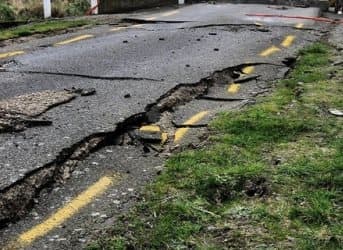No single new energy source is more responsible for altering America’s energy landscape than natural gas produced by hydraulic fracturing of underground rock formations. “Fracking” has produced opposing camps of industry advocates versus environmentalists concerned that the technique uses chemicals harmful to the environment and can lead to increased seismic activity.
In the wake of increased seismic activity in Ohio’s Poland Township in Mahoning County on 11 April Ohio’s Department of Natural Resources announced new, stronger permit conditions for drilling near faults or areas of past seismic activity.
In announcing the new conditions ODNR Director James Zehringer said, “While we can never be 100 percent sure that drilling activities are connected to a seismic event, caution dictates that we take these new steps to protect human health, safety and the environment. Not only will this reasonable course of action help to ensure public health and safety but it will also help us to expand our underground maps and provide more information about all types of seismicity in Ohio.”
Related Article: Colorado Sets US Fracking Rule Precedent
Under the new regulations companies seeking ODNR horizontal drilling permits issued for a site within 3 miles of a known fault or area of seismic activity greater than a 2.0 magnitude on the Richter scale would be required to install sensitive seismic monitors. Should the monitors then detect seismic activity in excess of 1.0 magnitude, drilling activity would be suspended while the cause of the horizontal is investigated, which, if it revealed a probable connection to the hydraulic fracturing process, would lead to the suspension of all well completion operations. In light of the new permit conditions ODNR will develop new criteria for new permit applications as well as reviewing previously issued permits that have not been drilled.
Underwriting ODNR’s concerns is that fracking activity is increasing in the state, with more than 800 wells drilled in Ohio’s Utica and Marcellus shale play, including as many as 16,000 hydraulic fracturing stages from those wells. ODNR geologists believe the sand and water injected into the well in Poland Township, Mahoning County during the hydraulic fracturing process may have increased pressure on an unknown microfault there, resulting in the 10 March seismic event. Further hydraulic fracturing at the site is suspended but Hilcorp Energy Co. will be allowed to recover oil and gas from five previously drilled wells, as long as seismic monitoring occurs. The ODNR expects the drawdown of activity at the site to have the beneficial effect of reducing underground pressure and decreasing the likelihood of another seismic event.
The ODNR has led Ohio to join a consortium of state regulators dedicated to learning more about seismic activity and its potential link to oil and gas activity. The consortium members are cooperating with the Interstate Oil and Gas Compact Commission and Groundwater Protection Council to pool data and information, as well as utilize current and future research to develop common procedures for monitoring seismic activity and develop response techniques if activity occurs.
Related Article: Can U.S. LNG Break Russia’s Gas Grip on Europe?
ODNR has been a coordinator behind the Ohio Seismic Network, which began recording seismic events in 1999. Prior to the establishment of the OSN, state officials were forced to rely on seismic data from out of state entities. Ohio has a history of seismic activity, and since the network has established, Ohio has experienced 109 events greater than 2.0 magnitude and the ODNR will utilize OSN data in its new application review process.
ODNR has also put online an “Earthquake Epicenters in Ohio” map of underground seismic faults and past seismic events, incorporating OSN data.
The ODNR decisions join a number of other state entities, including Texas, Oklahoma and California actively investigating probable causal links between fracking and increased seismic activity. The issue now is how the natural gas industry intends to respond to growing government concerns about increased seismicity near fracking sites.
By John Daly of Oilprice.com


















